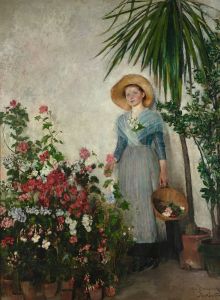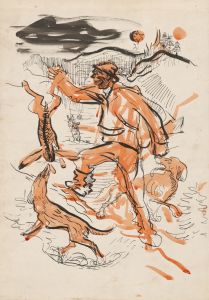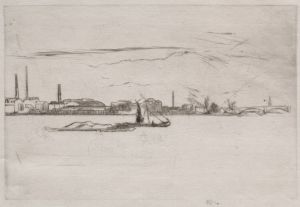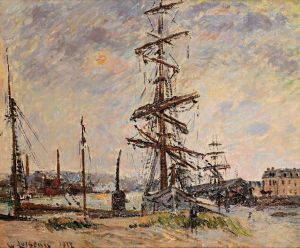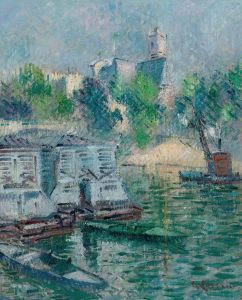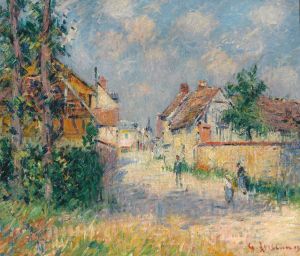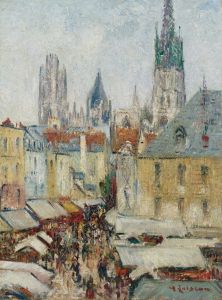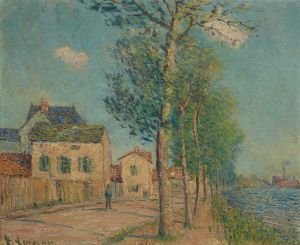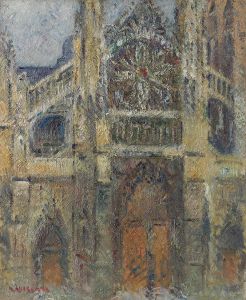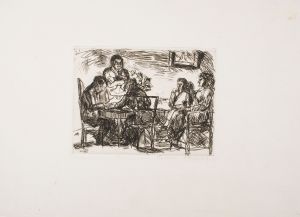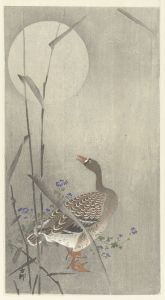
Paysage
A hand-painted replica of Gustave Loiseau’s masterpiece Paysage, meticulously crafted by professional artists to capture the true essence of the original. Each piece is created with museum-quality canvas and rare mineral pigments, carefully painted by experienced artists with delicate brushstrokes and rich, layered colors to perfectly recreate the texture of the original artwork. Unlike machine-printed reproductions, this hand-painted version brings the painting to life, infused with the artist’s emotions and skill in every stroke. Whether for personal collection or home decoration, it instantly elevates the artistic atmosphere of any space.
Gustave Loiseau (1865–1935) was a French Post-Impressionist painter known for his landscapes and scenes of rural life. He was part of the generation of artists who followed the Impressionists, and his work is characterized by a focus on light and atmosphere, often capturing the changing seasons and times of day. Loiseau's technique involved the use of short, brisk brushstrokes and a vibrant palette, which he employed to convey the natural beauty of the French countryside.
"Paysage" is one of Loiseau's many landscape paintings, a genre for which he is best known. While specific details about this particular painting are limited, it is representative of Loiseau's broader body of work, which often depicted scenes from Normandy, Brittany, and the banks of the Seine. His landscapes typically feature rural settings, including fields, rivers, and villages, rendered with a keen attention to the effects of light and shadow.
Loiseau was deeply influenced by the Impressionists, particularly Claude Monet, whose work he admired. However, Loiseau developed his own distinct style, which some art historians describe as more structured and less spontaneous than that of the Impressionists. He often painted en plein air, a practice that allowed him to capture the transient effects of light and weather with immediacy and authenticity.
Throughout his career, Loiseau exhibited regularly at the Salon des Indépendants and the Salon d'Automne, two important venues for avant-garde artists in Paris. His work was well-received, and he became associated with a group of artists known as the "School of Rouen," which included other notable painters such as Pierre Dumont and Robert Antoine Pinchon.
Loiseau's landscapes are characterized by their rhythmic compositions and harmonious color schemes. He often employed a technique known as "en treillis" or "cross-hatching," which involved layering short, intersecting brushstrokes to create texture and depth. This method allowed him to convey the movement of foliage, the flow of water, and the play of light across the landscape.
In addition to his landscapes, Loiseau also painted still lifes and urban scenes, though these are less common in his oeuvre. His work is held in high regard for its ability to evoke a sense of place and time, capturing the quiet beauty of the French countryside with sensitivity and skill.
Today, Loiseau's paintings are held in numerous public and private collections around the world, including the Musée d'Orsay in Paris and the Art Institute of Chicago. His work continues to be celebrated for its contribution to the Post-Impressionist movement and its enduring appeal to lovers of landscape painting.
While specific information about the painting "Paysage" is limited, it serves as an example of Loiseau's mastery of landscape art and his ability to capture the essence of the natural world. His paintings remain a testament to his dedication to capturing the beauty and tranquility of rural France.






